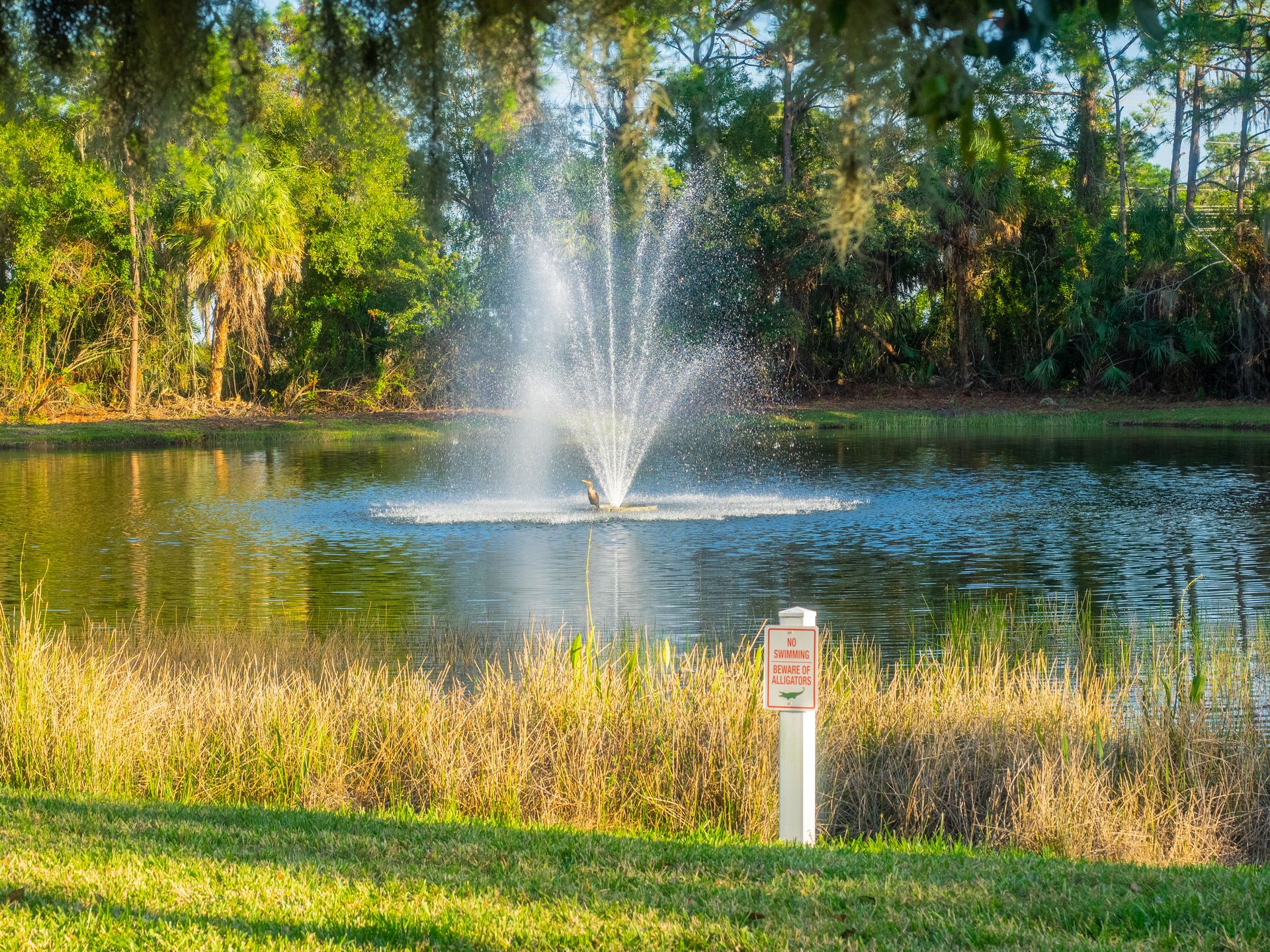Retention ponds serve as critical components of urban and suburban infrastructure. Their primary responsibility is to collect rainwater runoff from impervious surfaces, such as roads, parking lots, and rooftops, to prevent drainage systems from becoming overwhelmed.
Retention ponds are also an important BMP in residential stormwater management used to collect sediment runoff so that all pollutants can be treated before water is discharged back into public systems.
Understanding this, conducting regular maintenance of your retention ponds is an essential step to maintaining local infrastructure and protecting the environment.
This guide will provide an overview of retention pond maintenance, including how it works, why it’s essential, and why you should invest in regular inspections.
How Do Retention Ponds Work?
Retention ponds are man-made structures designed to collect excess stormwater during rainfall events. They are constructed as deep ponds that allow for a few feet of standing surface water and sediment to collect in a storage unit at the bottom of the pond.
Most are surrounded by steep banks with rocks, vegetation, or riparians designed to filter out sediment.
Aside from its primary responsibility of storing rainwater, retention ponds allow for the gradual discharge of rainwater–free of sediment–to protect rivers and streams from excess turbidity.
Benefits of Well-Maintained Retention Ponds
Having a functioning retention pond benefits local residents and construction companies in multiple ways:
- Flood Prevention: Properly maintained retention ponds prevent excess water from entering drainage systems, reducing the likelihood of flooding during heavy rainfall.
- Erosion Control: By controlling the water flow, these ponds prevent erosion along waterways and maintain the stability of nearby soil.
- Improved Water Quality: Regular maintenance provides erosion control and reduces accumulated sediment and pollutants, leading to cleaner and healthier water bodies.
- Wildlife Habitat: Well-maintained ponds provide habitats for various aquatic species, contributing to local biodiversity.
- Aesthetic Value: A properly maintained pond enhances an area’s visual appeal, providing recreational spaces for communities.
Retention Pond Maintenance Essentials
While they may look like permanent structures that require little maintenance, this is actually a popular misconception.
Retention pond maintenance is an essential component of protecting your local environment both during and after construction activity has ceased.
Some essential maintenance tasks will include:
- Removing sediment from the basin, as well as outflow and inflow pipes.
- Maintaining natural vegetation through mowing, trimming, and mulching.
- Clearing ponds of trash, debris, hazardous materials, or pollutants.
- Maintaining mechanical equipment to ensure ponds are stable and don’t flood.
- Stabilizing slopes to prevent erosion around ponds, which lead to pollution.
Signs of Poor Retention Pond Maintenance
Evidence of poor maintenance will soon manifest in several different ways, including algae blooms, excessive plant growth, poor water drainage, and a foul odor. These symptoms could lead to reduced water quality and downstream pollution, which you may be liable for.
Retention Pond Maintenance Challenges
Proactive retention pond management can save you lots of money and stress down the line on expensive repairs or filtration systems. Nevertheless, some challenges exist for companies and residents, such as invasive plant species that grow out of control, expensive structural issues, and sediment buildup that becomes difficult to keep up with.
Seasonal weather, such as snow, excessive foliage, and even summer pests, can also bring a whole new set of challenges to maintenance.
Therefore, hiring a company to assist with retention pond maintenance can often be a cost-effective measure to save you money down the line.
DIY Vs. Professional Retention Pond Maintenance
Everybody indeed wants to get the cheapest deal possible, but forgoing professional inspection and service for DIY solutions may end up costing you in the long run.
A professional retention pond inspection will encompass several areas outside of your expertise, including:
- Obstructions to basins and outflows, which require dredging or repair.
- Slope erosion, which requires new vegetation or grading.
- Excessive vegetation, which requires clearing.
- Mechanical functionality, which requires technical expertise.
- Water quality, which requires testing for turbidity and hazardous materials.
For thorough and efficient professional retention pond maintenance and inspection, trust the experts at Valor Environmental. We offer various erosion control services designed to protect local infrastructure and ensure construction projects run smoothly.
Whether you own a residential or commercial retention pond, be sure to give us a call for all maintenance and construction needs.
FAQs: Retention Pond Maintenance
How Frequently Should Maintenance Occur?
Maintenance frequency varies based on factors like pond size, location, and surrounding land use. Generally, routine inspections and minor maintenance should occur quarterly, while major activities like dredging may be needed every 5-10 years.
Can I maintain a retention pond myself?
While some tasks can be DIY, professional maintenance ensures comprehensive assessments and compliance with regulations.
Why is biodiversity important in pond ecosystems?
Biodiversity promotes ecosystem health, resilience, and balance, contributing to a thriving pond environment.
How do retention ponds contribute to water management?
Retention ponds collect stormwater runoff, preventing flooding and erosion while improving water quality through sediment settling.

